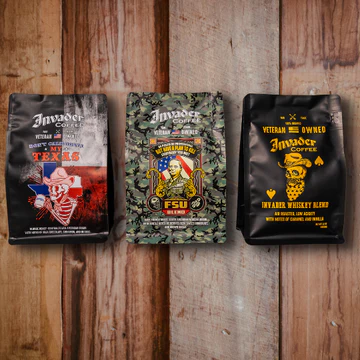The beautiful and intricate journey of a coffee bean, from its humble beginnings on a tree to the rich, flavorful brew in your cup, is marked by several important stages. Perhaps one of the most crucial and transformative is coffee roasting. Veteran coffee roasters, who have taken the helm of this process with mastery and finesse, provide valuable insights into the transformative world of coffee roasting.
Coffee roasting is an art, a science, and a craft all rolled into one. It's a process that requires precision, knowledge, and a deep understanding of how heat transforms coffee beans. Veteran coffee roasters bring their unique experiences, skills, and dedication to this craft, ensuring that every batch of beans achieves the desired roast level, which is essential in defining the coffee's final taste.
The process begins with raw, green coffee beans, which are then heated in a roasting machine. As the temperature rises, the beans undergo several stages of transformation. They lose moisture, increase in size, change color from green to yellow to varying shades of brown, and start developing the complex flavors and aromas that we associate with coffee.
Veteran coffee roasters know the importance of controlling the roast's temperature and duration. The process can take anywhere between 10 to 20 minutes, depending on the desired roast level – light, medium, or dark. Light roasts, often used for specialty coffees, preserve more of the original flavors of the beans and have a more acidic profile. Medium roasts offer a balance between the beans' inherent flavors and the taste notes developed during roasting, resulting in a well-rounded brew. Dark roasts, on the other hand, feature bold, robust flavors with less acidity and more body.
Roasting coffee is not just about applying heat to the beans; it's about understanding the beans' responses to that heat. One notable stage of the process is the 'first crack.' This occurs when the beans have expanded enough that the pressure inside them causes them to crack open, similar to popcorn. This stage signals the transition from a light to a medium roast. Some roasters stop here, while others continue to a 'second crack,' marking the transition to a dark roast.
What makes veteran coffee roasters stand out is their deep understanding of this process and their commitment to quality. Many veteran-owned roasteries, such as Black Rifle Coffee Company and G.I. Joe Coffee Company, have perfected their roasting techniques, ensuring a consistent and high-quality brew every time. Moreover, their military discipline and attention to detail are reflected in their craft, resulting in exceptional coffee.
In addition to producing great coffee, many veteran coffee roasters use their businesses to support veteran and military communities. They often donate a portion of their profits to veterans' causes, making each cup of coffee a means to give back.
Understanding the coffee roasting process gives us a new appreciation for the cup of coffee we enjoy each day. The artistry, precision, and dedication of veteran coffee roasters demonstrate the passion and craftsmanship that goes into every step of the process. So, the next time you brew a cup of coffee, take a moment to appreciate the journey those beans have made, and the veteran roasters who have helped shape their flavor.


No comments yet